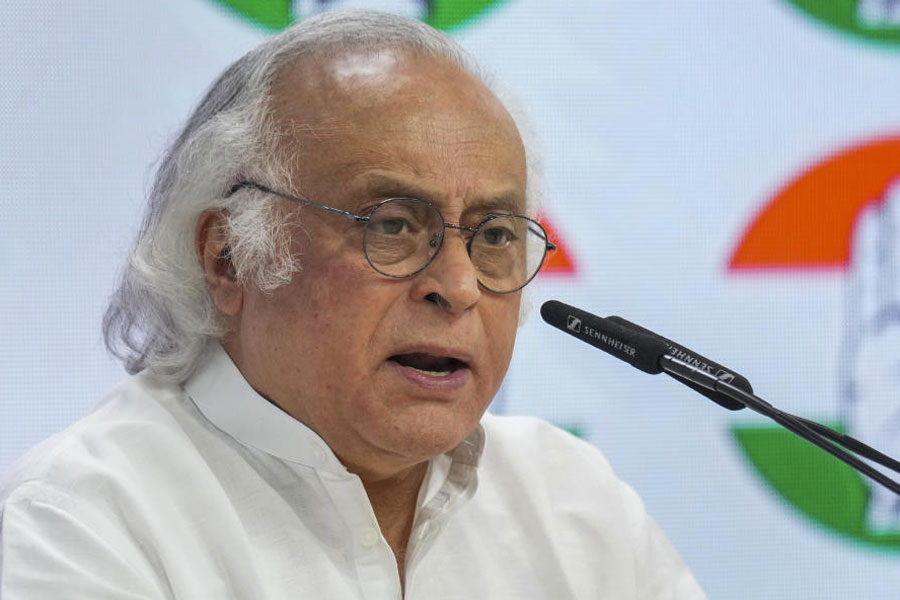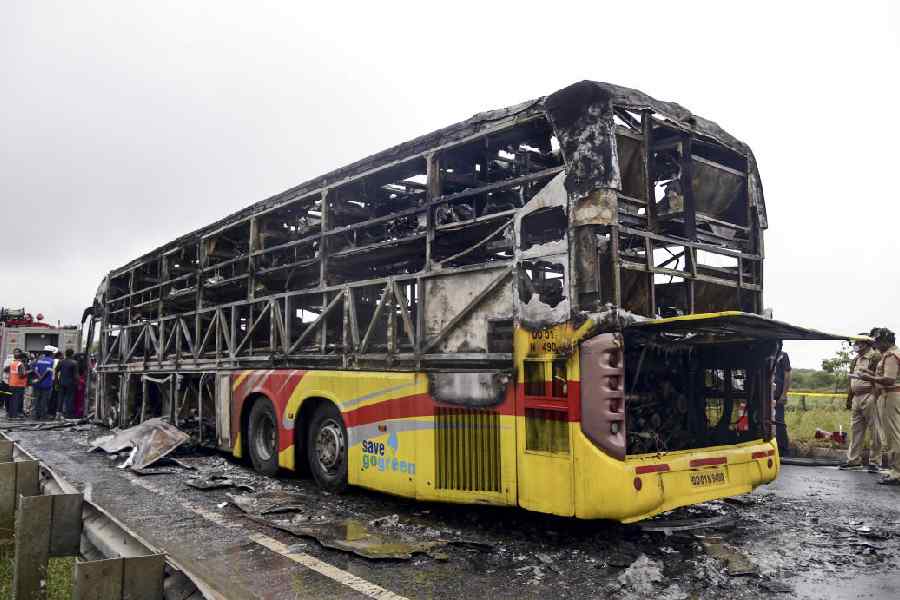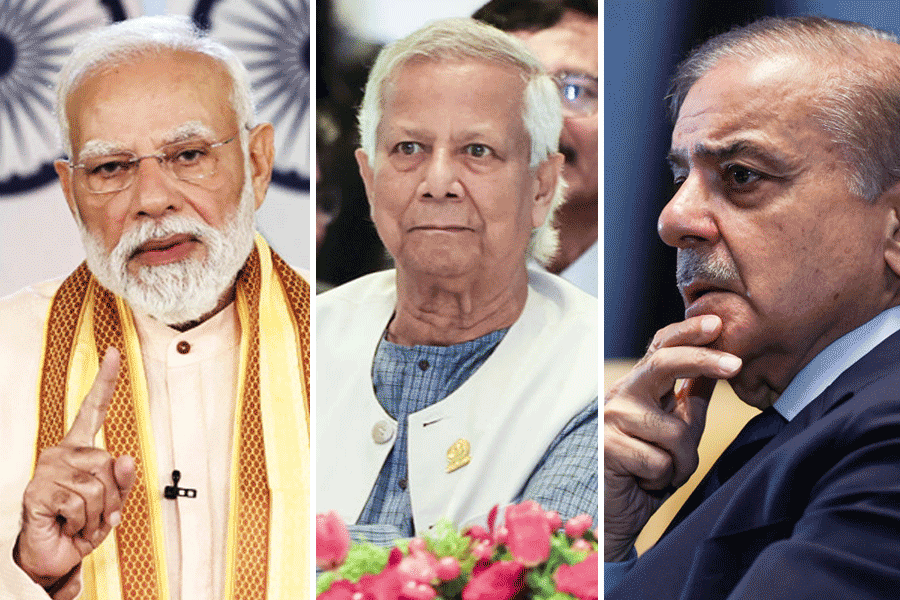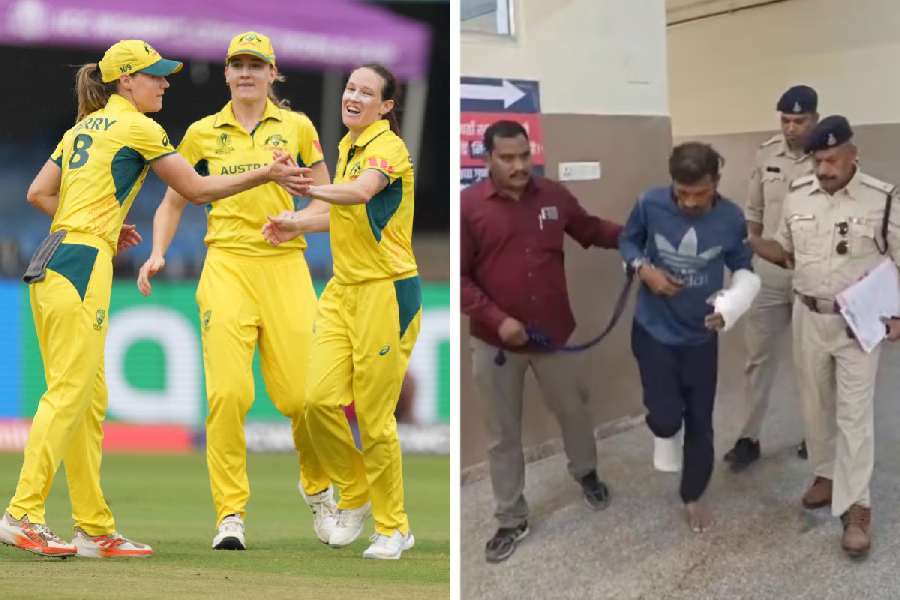 |
| Dev Gurung (left), Maoist local development minister, after taking oath in Kathmandu on Sunday. (Reuters) |
Kathmandu, April 1: Girija Prasad Koirala was today unanimously re-elected Prime Minister of Nepal by its interim legislature enabling him to head an eight-party government, including Maoists.
Later, the Prime Minister swore in a 22-member cabinet in his office complex.
Thus began an unprecedented chapter in the history of Nepal. Its democratic political parties have successfully persuaded the leaders of the 12-year-long Maoist insurgency to join the parliamentary mainstream.
After the formation of the interim government, Maoist supremo Prachanda described the development as “a historic day” in the formation of a “new Nepal”. He claimed that the Maoists were not returning to an old system (of parliamentary democracy) but were creating “a new system that would steer Nepal in a new direction”.
Koirala told Parliament that electing a Prime Minister was not enough and difficult tasks lay ahead. “We have to move ahead in a united manner. Otherwise, there is a risk that we might slip,” he said.
The formation of the new government was welcomed even by the royalists of various hues in Parliament like Pashupati Shamshere Jang Bahadur Rana and former Prime Minister Suryabahadur Thapa.
While Rana advised the new government to make Nepal’s democracy inclusive by granting due share to the people of Terai (Madhesis), the Janjatis and other minorities, Thapa described the Maoists joining the government as the completion of a political phase and honouring a commitment in the roadmap for peace.
Bringing the Maoists into Parliament and then in the government was no easy task. The 83-year-old Koirala, often described as the “tallest leader” in south Asia today can be justifiably proud of his peace-making record. It was he who started the dialogue with the Maoists, formed an alliance of seven political parties to strengthen the dialogue process with the insurgents and pushed for their political accommodation.
This made possible a tumultuous people’s movement that the political parties and the Maoists led jointly. It resulted in the restoration of Parliament and the capitulation of the executive monarchy of King Gyanendra last April.
Although Koirala’s key partners in peace — Maoists leaders Prachanda and Baburam Bhattarai — have not themselves joined the government, credit goes to their sagacity and wisdom in making today’s interim government possible. They agreed to the cantonment of their cadre and put their weapons under the joint supervision of the UN.
Today, five of their comrades joined the interim government of Koirala.
True to their commitment of building an inclusive Nepal, their nominees to the new government show a wide representation of the multiplicity of people who make up Nepal — Krishna Bahadur Mahara (Chetri), Dev Gurung (Janjatis), Hisila Yami (women and Newars), Matrika Yadav (Madhesis) and Khadga Bahdur Biswakarma (Dalit).
The mandate of the interim government is to organise a free and fair election to a constituent assembly that will decide the future of the Nepalese state and polity. The election for the constituent assembly is to be held on June 20.
Earlier this morning, leaders of the eight party alliance signed five documents, committing them to a common minimum programme, a code of conduct for their ministers, working procedure of the interim government and for setting up a United Co-ordination Committee of the alliance consisting of its senior leaders to ensure smooth functioning of the government.











